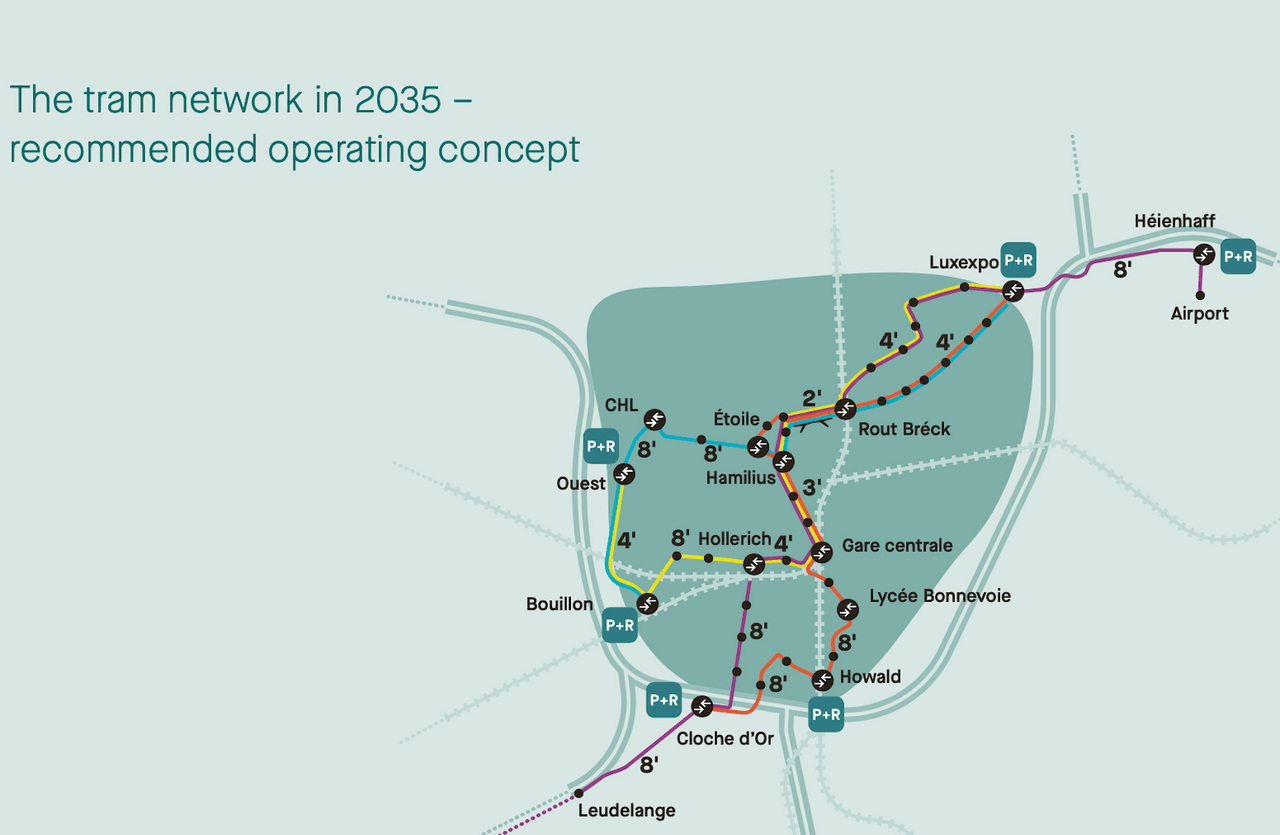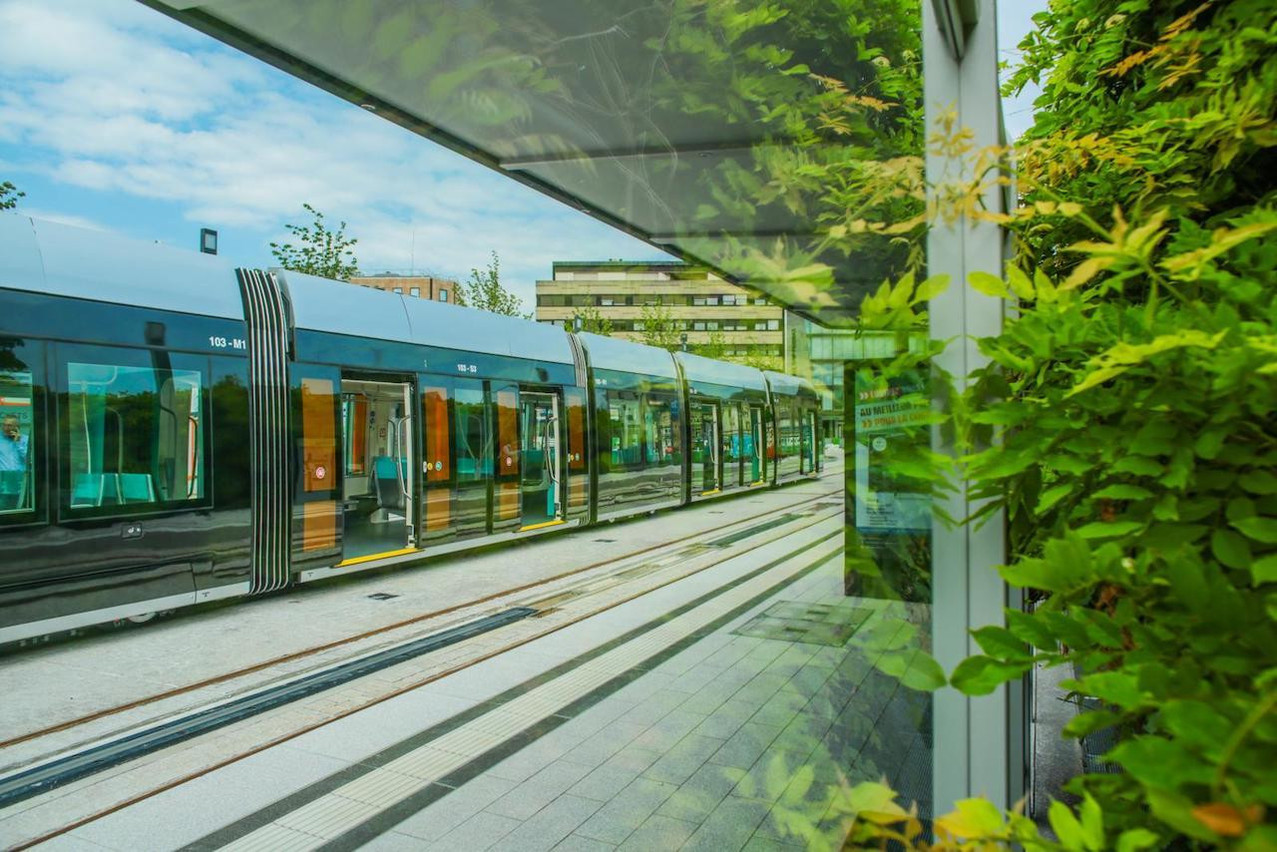Plans to create a new branch of the tram system linking the rond-point Schuman with the boulevard Royal via the avenue de la Porte-Neuve have come under fire from environment lobby group Natur&Ëmwelt. In a letter sent to Luxembourg city council and minister for transport (déi Gréng) on Tuesday, Natur&Ëmwelt says that it is concerned that the extension of the tram line would result in the removal of trees and bushes along the avenue de la Porte-Neuve, which also protect the Kinnekswiss meadow in the city park.
The plans for the tram, unveiled in spring as part of the National Mobility Plan 2035, includes a new line via route d’Arlon to the new Bouillon interchange hub.

The central tram network as it would look in 2035, with the connection along the avenue de la Porte-Neuve. Ministry of transport and public works
But, connecting that line to the existing network at place de l’Etoile requires a major feat of engineering. “The turn is too tight.” Patrick Goldschmit, the alderman in charge of transport at the city of Luxembourg has said. That leaves two alternatives. Either requiring passengers using the route d’Arlon stretch to change lines at the Place de l’Etoile, or building a new branch along avenue de la Porte-Neuve and boulevard Royal to connect to the existing network at the junction with avenue Emile Reuter.
The latter option is being seriously examined and is actually included in the plans for the tram network as it should look in 2035.
Read also
But building a tram track along avenue de la Porte-Neuve and the section of boulevard Royal presents other challenges. The avenue already serves three lanes of traffic and a bus lane, while plans to add a cycle lane (to avoid cyclists having to share paths in the park with pedestrians) are also being mooted. Something will have to give, and that could mean the upper part of the road towards the rond-point Schuman being widened and encroaching into the park.
The connection with the boulevard Royal is also tight and means that tram may have to switch from the western side of the avenue de la Porte-Neuve to the eastern side of the road in order to lessen the angle of the turn.
These trees play a vital role in cooling the city
But it is the thought that the trees and bushes currently lining the edge of the park may have to be removed that so upsets Natur&Ëmwelt. “These trees play a vital role in cooling the city,” the group’s letter, which was also sent to media, argues. “And that will become even more important in the future.” The vegetation also provides homes to several species of protected birds and other animals including bats, the letter says.
But previously the city has made clear that when creating new traffic infrastructure, choices have to be made that may not always please the environmental lobby. Back in June, mayor Lydie Polfer told Delano that a few trees may also have to be removed to create a new cycle path along the boulevard Prince Henri, on the southern edge of the upper park. “You don’t get something for nothing,” the mayor said. “We have assessed the possibilities and are trying to keep it to the minimum possible, because trees are real added value to the city.”
Trees not cars
Natur&Ëmwelt takes umbrage with the city’s transport policy in general, arguing that the council is prioritising space for cars over so-called soft mobility. “A project like this, which requires rethinking traffic in the city, would be the perfect moment to consider how our traffic problem could be solved in a truly future-proof way,” the letter says.
While saying it is not opposed to cars in the city on principle, the groups is demanding that the authorities rethink the plans for the avenue de la Porte-Neuve if the construction of the tram tracks go ahead.
“Not the trees, but the cars in Porte-Neuve must go. Because only this corresponds to a sustainable urban policy, the preservation of the local biodiversity and a serious conservation of species and climate protection.”
